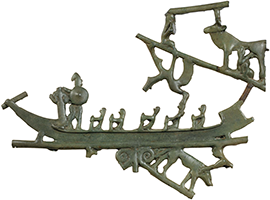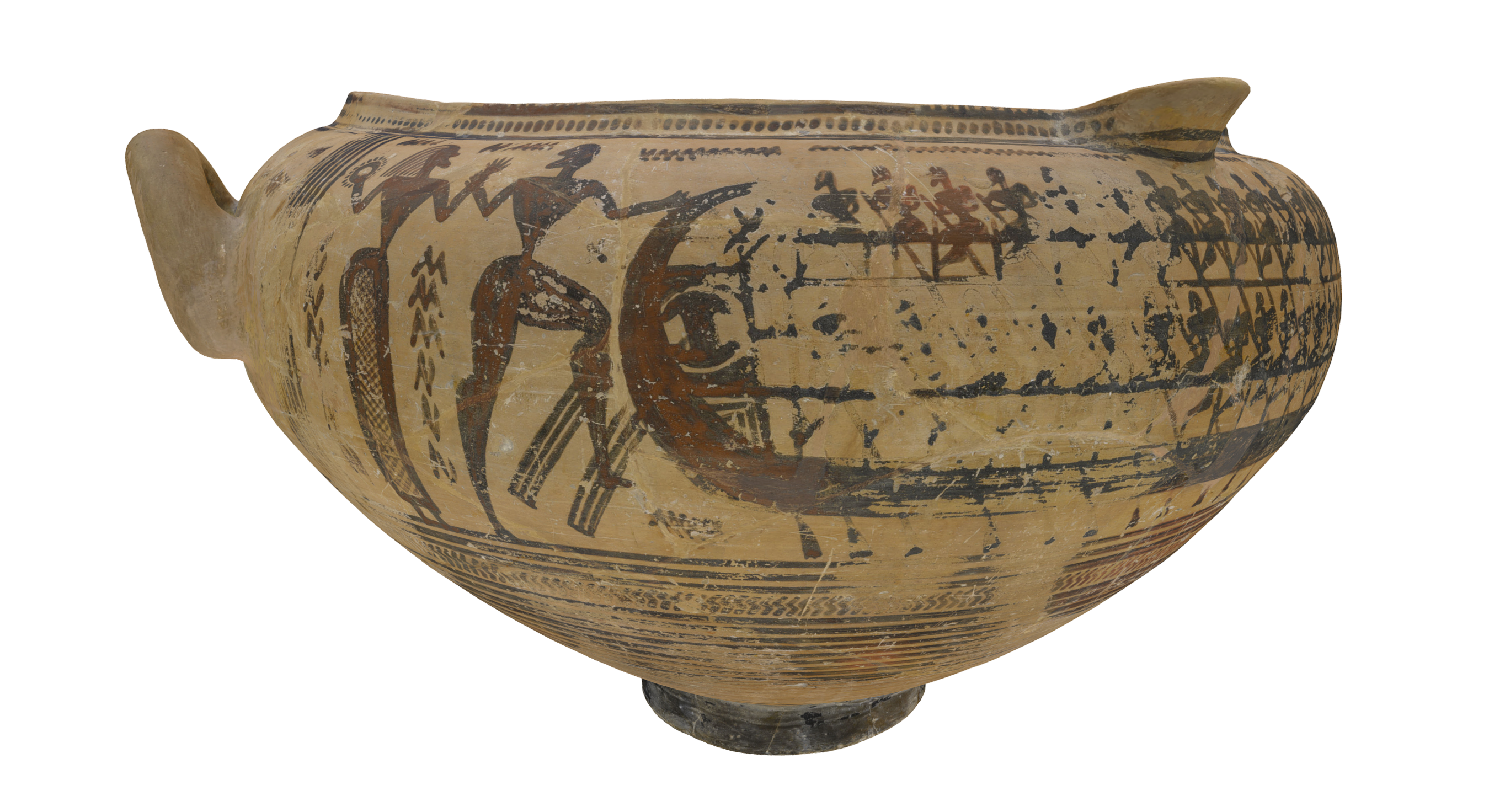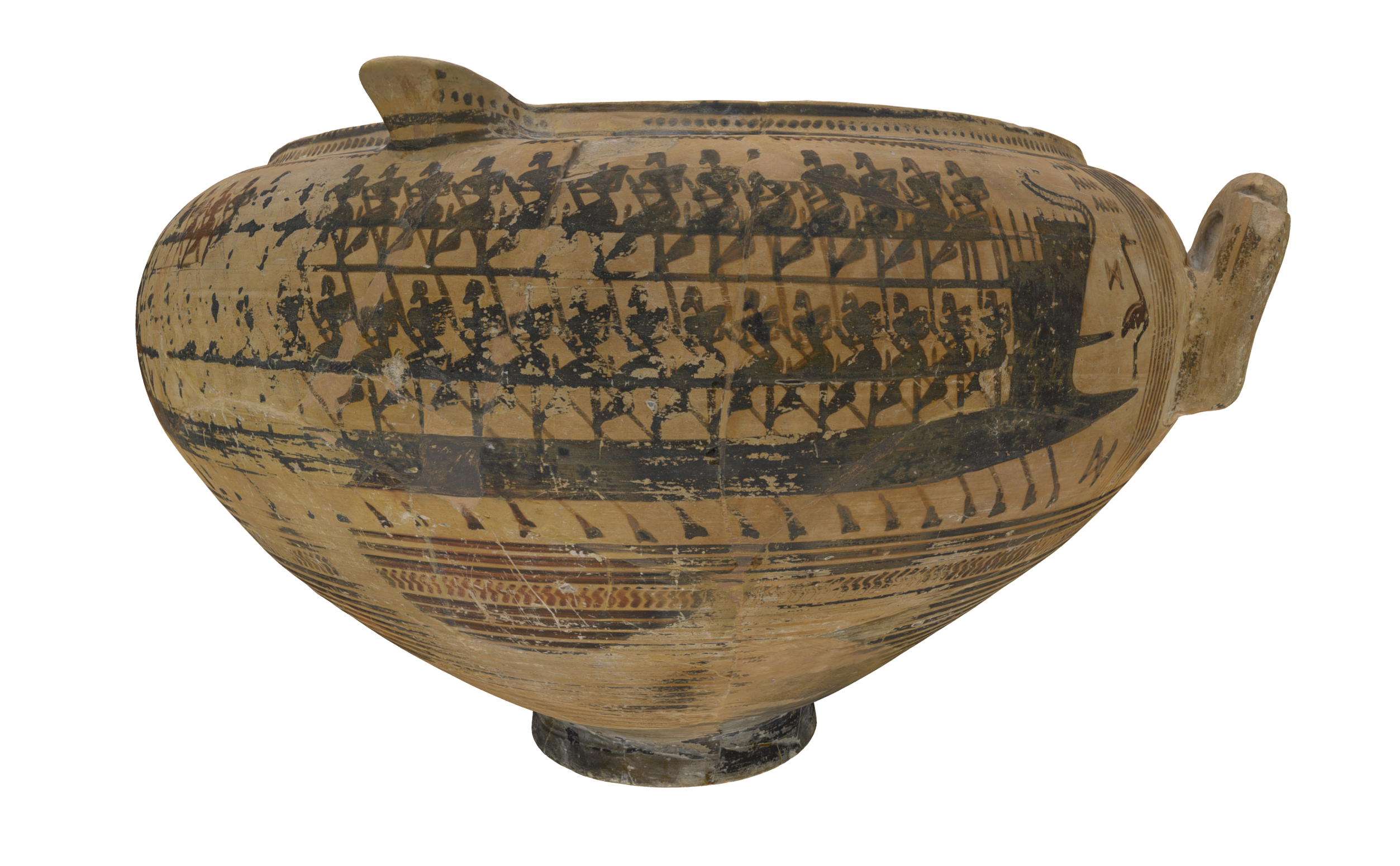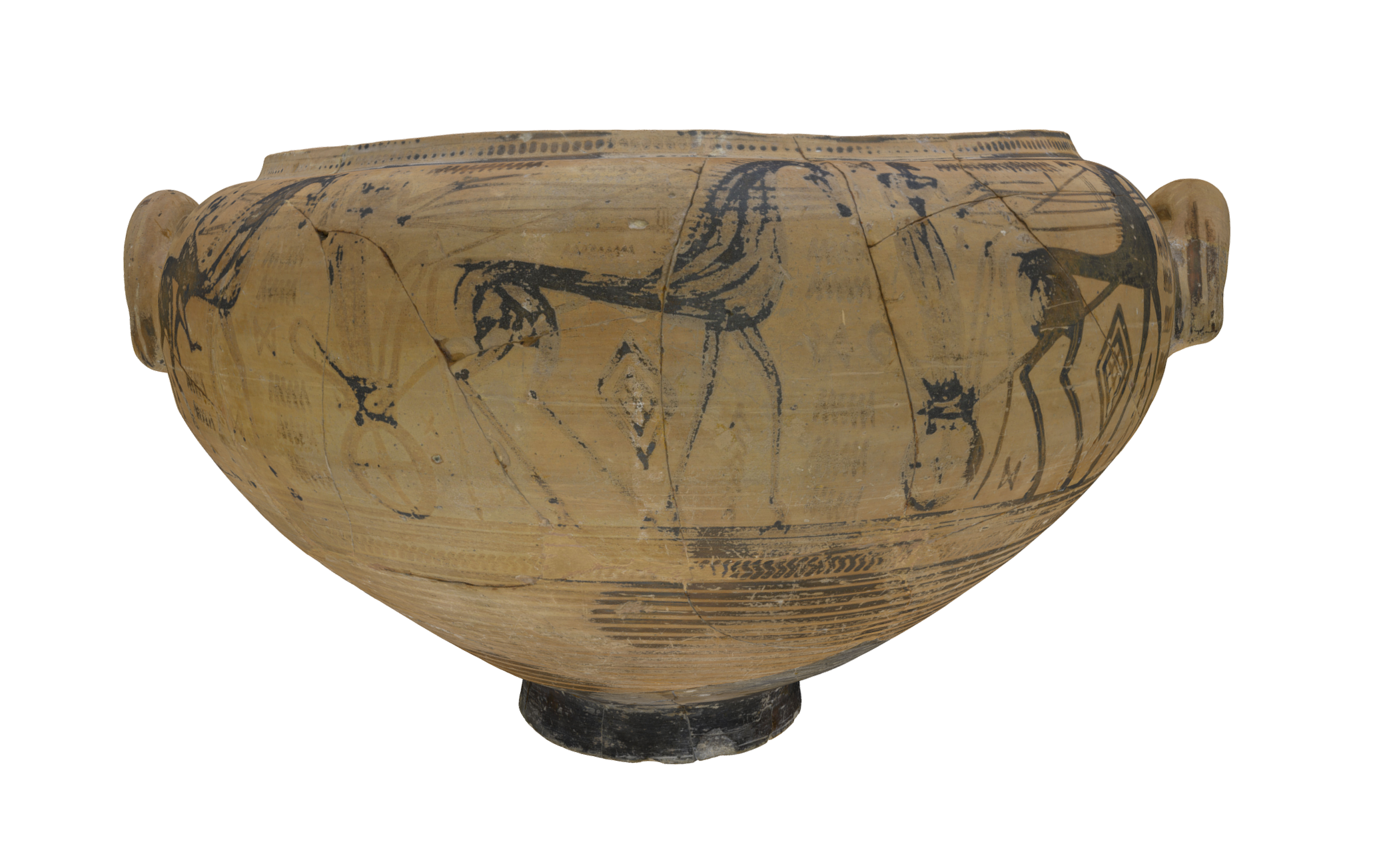Ship to the right, executed in great detail. Low hull, massive square bow with a vertical post integrating the bow projection, very high bow and stern. The stem post is S-shaped and hatched. Tapering bow projection with no eye, with a single plank protruding above it. Regularly curved stern without a horn. The aftercastle has a screen, with a seemingly large port partly closed by a Dipylon-type shield. Helmsman above the screen, with steering oars identical to Dipylon group crossing the porthole, and protruding behind the stern. Two banks of rowers are represented, twenty in the lower bank and nineteen in the upper. Only the oar-blades of the lower bank are shown, for the upper-bank oars are broken off about level with the shoulders of the lower-bank rowers. Helmsman stands on the after-platform between the levels of the two banks. The lowest thick line represents the hull. Rowers sits on benches supported on vertical struts, placed higher in order to show their legs. Presence of tholepins means this line corresponds to the gunwale. The same arrangement is repeated for the upper level oarsmen, with tholepins visible again.
Abduction scene
A153
Late Geometric IIA, c. 735 B.C.
Thebes
Height: 30.5 cm; Diameter: 38 cm (or rim)
Attic, Sub-Dipylon Group. Orange-buff clay, brown and white grits, lustrous paint. Short inward-leaning lip, flat above with bridge across spout; shallow hemispherical body, high ring foot; rising round handles
British Museum 1899,0219.1
Basch 1987: 163-64, figs. 328-30; Kirk 1949: 113-114, no. 40, fig. 4; Morrison-Williams 1968: 28-29, geom. 19, pl. 4e; Williams 1958: 124-25
(A) Ship scene: from left, woman with long hair and latticed skirt holding circular object surrounded by dots; her forearm is grasped by a man looking towards her and advancing towards the ship, his forward leg overlapping with the two steering oars as he is just about to step on board, his hand holding on to the stern post. A scene of departure or abduction. The possibility that it relates a specific myth is highly debated. Ship with nineteen and twenty rowers shown in two registers, presumably seated on opposite sides of the vessel (debated); near the stern, a small Dipylon shield in silhouette; above the prow, a silhouette bird.
(B): Two chariot groups with single horses, followed by one horseman. A silhouette bird behind the horseman. Painter working in the tradition of the Dipylon master but has broken new ground in his iconography. Earliest known Attic horsemen, and among the earliest charioteers to wear a long robe.
Some typical features of the conventional style, such as the forward horn and forecastle, as well as the blades of both rowing and steering oars. General impression of a top-heavy ship however is a departure. The height of the ship has been greatly distorted in order to show all the rowers. This should be interpreted as a double-leveled ship despite some difficulties. There are for one, twenty oarsmen below but nineteen above. Such a discrepancy would be out of the question in a single level ship because of the need for balance, but is normal in a two-level one. The argument that the artist simply forgot to draw a rower is questionable in light of the fact that a similar discrepancy in the ratio is observable for the Toronto bowl. The oars of the "upper" oarsmen furthermore do not disappear after they pass the gunwale as they should if they were far-side oars. They do not however extend all the way to the water on the near side, but this is easily explained as a solution to prevent cluttering and preserve clarity. They meet the lower oars at an angle, aft in line, which again makes sense in a two-leveled ship. The awkward distortion in the ship's proportions and the seeming absence of hull structure are the result of the artist's determination to show all rowers in their entirety, including their legs. Even in this problematic case, a "bird's eye" view requires to explain away much more than it solves.
Basch, L. 1987. Le musée imaginaire de la marine antique. Athens: Institut Hellénique pour la preservation de la tradition nautique.
Kirk, G.S. 1949. “Ships on Geometric Vases.” BSA 44: 93-153, pls. 38-40.
Morrison, J.S. and R.T. Williams. 1968. Greek Oared Ships: 900-322 B.C. Cambridge: Cambridge University Press.
Williams, R. T. 1958. “Early Greek Ships of two levels,” JHS 78: 121-130.








